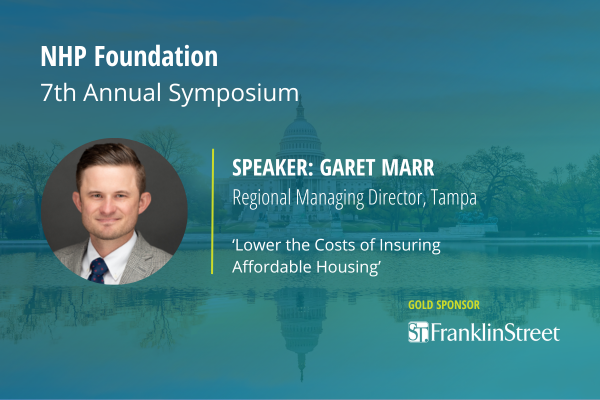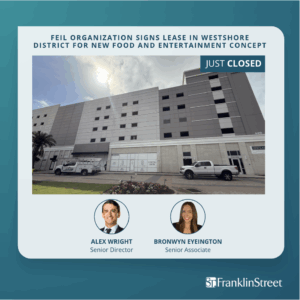Franklin Street is proud to be a GOLD sponsor of NHP Foundation’s 7th Annual Symposium, where Garet Marr, Regional Managing Director, recently spoke in Washington D.C., about the current insurance climate across affordable housing.
Today, many insurance companies refuse to insure certain properties, making the ability to produce more affordable housing in the future even more arduous. These include project based section 8 properties, ones in high crime areas, old properties, and those in high probability climate-related disaster areas.
Garet Marr, Regional Managing Director, Franklin St. Insurance Services, believes insurance companies are not intentionally discriminating against affordable housing owners and tenants, but market conditions and industry inefficiency lead them to the conclusion that economically they must. He sees a future where affordable housing can have affordable insurance. It begins with a shake-up of the staid housing insurance industry. There must be new ways to look at the riskiest parts of insuring affordable housing—crime and climate-related disasters.
Marr would like to see underwriting incentivized to focus on community investments and revitalization looking forward, with some real skin in the game. According to a 2017 American Sociological Review study, there is a causal relationship between local nonprofits and the decline in violent crime. The study found that “approximately every 10 additional organizations focusing on crime and community life per 100,000 residents leads to a 4% reduction in the property crime rate.” When a community takes an interest in themselves, with the right resources, crime, and unemployment rates decrease. Insurers need to be part of this equation at the outset.
With regards to climate-induced crises, often the solution is to cease investment in areas prone to natural disaster, and many private companies have chosen to do that. This leaves an increasing void in affordable housing units in areas that need it most. The big idea here is to integrate climatology into future construction and development. By assessing the sustainability of developments not only under today’s climate conditions but considering those far in the future, insurance companies can insure with more confidence, while still calculating risk.
The way forward includes accessing data and technology to model out climate change along with social and demographic changes at the local level, allowing owners and developers to better understand where they should build, and which infrastructure improvements need to be made.
Insurance modeling software today is both cost-prohibitive to many and primarily models based on how historical events would have impacted a portfolio’s assets. While that data is important, more advanced software becoming available includes “Climate Risk Analytics”, provided by CoreLogic, which does the pre-building work, ensuring properties are built to withstand catastrophic weather events. The goal is for products like these to be made widely available.
The industry must do all it can to enshrine the goal of housing insurance: to protect residents, and assets, long term, and control costs (including insurance) to guarantee continuous investment in communities.
NHPFoundation.org
Read more here about the 2023 Symposium Report from NHP Foundation.




